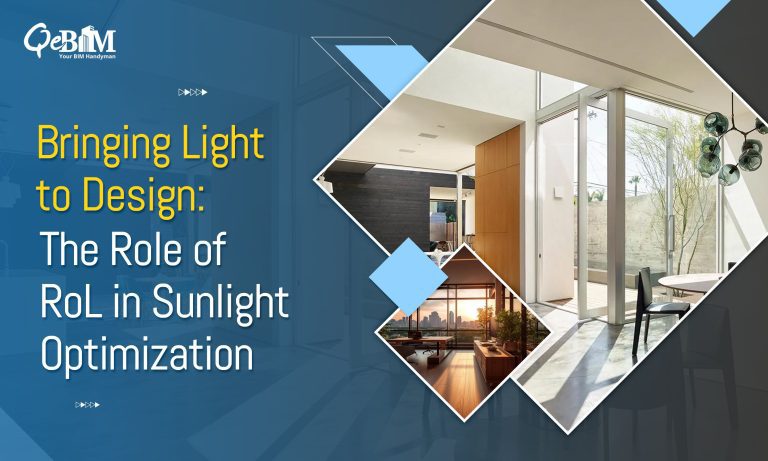Bringing Light to Design: The Role of RoL in Sunlight Optimization

Whenever we buy any space, all we look out for is the sunlight. The significance of natural light is undeniable in the modern architectural landscape. Optimal sun exposure not only elevates the aesthetic appeal but also promotes the well-being of the occupants, reduces the energy consumption as well as supports the sustainable building practices. But how can architects, designers and building owners ensure that their structures receive the right amount of sunlight?
Well, there are apps such as the RoL (Radiance of Light) available in the market to test out your structure’s exposure to sunlight.
The Significance of Optimal Sunlight in Buildings
Natural sunlight plays a very important role in the building design. Proper daylighting strategies can:
- Enhance Mood and Productivity: The Natural light has been proven to boost mood, reduce stress and improve the productivity in residential, commercial along with the educational spaces.
- Reduce Energy Costs: By maximizing the daylight, buildings can reduce the dependency on the artificial lightings as well as the HVAC systems ultimately leading to the significant energy savings.
- Support Sustainability Goals: Incorporating daylighting reduces the carbon footprints and aligns well with the green building certifications like LEED and BREEAM.
Introducing the RoL Application
The RoL Application is a cutting-edge tool developed to evaluate and enhance sunlight exposure for buildings. It leverages the advanced algorithms as well as the 3D modeling to provide precise insights into how the sunlight interacts with any structure throughout the year. This powerful tool integrates seamlessly with the 3D BIM Modeling workflows thereby enhancing the accuracy and efficiency of the digital design processes.
Key Features of the RoL Application:
- Sunlight Analysis: It evaluates the building’s exposure to the natural light across the different seasons along with the times of the day.
- 3D Visualization: It gives the dynamic 3D models to visualize the light penetration as well as the shadow casting in the real-time.
- Energy Efficiency Insights: It provides the data-driven recommendations to enhance the daylight utilization thereby reducing the energy consumption.
- Design Optimization: It helps the architects to adjust the building orientation, window placement and also the shading devices for maximum efficiency.
- Visualize Sunlight Dynamics: It understands how the sunlight moves and changes throughout the day within your design space.
- Analyze Sunlight Angles: It measures the sunlight angles precisely to optimize the window placement as well as the shadings.
- Accurate Sunlight Insights: It provides the detailed and accurate insights to drive the informed design decisions.
- Identify Obstructions: It detects the external obstructions that may affect the sunlight exposures.
- Generate Year-Round Sunlight Reports: It produces comprehensive reports showing sunlight patterns throughout the year.
- 3D Models with Unmatched Accuracy: It create highly detailed 3D models that reflects the true sunlight behaviour.
How Does the RoL Application Work?
The RoL Application integrates with the BIM platforms and CAD software thereby making it a seamless addition to the design process. Here’s how it works:
- Data Input: Import building designs, site coordinates along with the environmental parameters.
- Simulation: Run simulations to analyse how sunlight interacts with the structure over the different periods.
- Analysis Reports: Generate comprehensive reports detailing the areas with the optimal, insufficient or excessive sunlight exposure.
- Design Adjustments: Implement the suggested modifications to improve the daylight distribution.
Benefits of Using the RoL Application
- Precision in Design: Accurate simulations eliminates the guesswork to a greater extent allowing for the data-driven design decisions.
- Enhanced Comfort: It creates spaces with the balanced light distribution thereby reducing the glare and overheating.
- Cost Savings: It optimizes the natural light use thereby lowering the energy bills and the maintenance costs.
- Sustainability: It supports the eco-friendly design practices and helps to achieve the green building certifications.
Real-World Applications
The Architects, urban planners, real estate developers as well as the sustainability consultants can leverage the RoL Application for:
- Residential Projects: Ensuring that the homes receive ample daylight while maintaining the privacy.
- Commercial Buildings: Enhancing the employee productivity and reducing the operational costs.
- Educational Institutions: Creating well-lit, conducive learning environments.
- Healthcare Facilities: Supporting the patient’s recovery through the therapeutic natural light exposure.
Final Thoughts
With the growing demand for sustainable and energy-efficient buildings, tools like the RoL Application are becoming indispensable. By providing precise sunlight analysis as well as the actionable insights, the RoL helps to design the spaces that are not only visually appealing but also environmentally responsible. It plays a crucial role in advancing the Digital Construction Services thereby enabling more smarter & data-driven decisions in the architectural and urban planning.